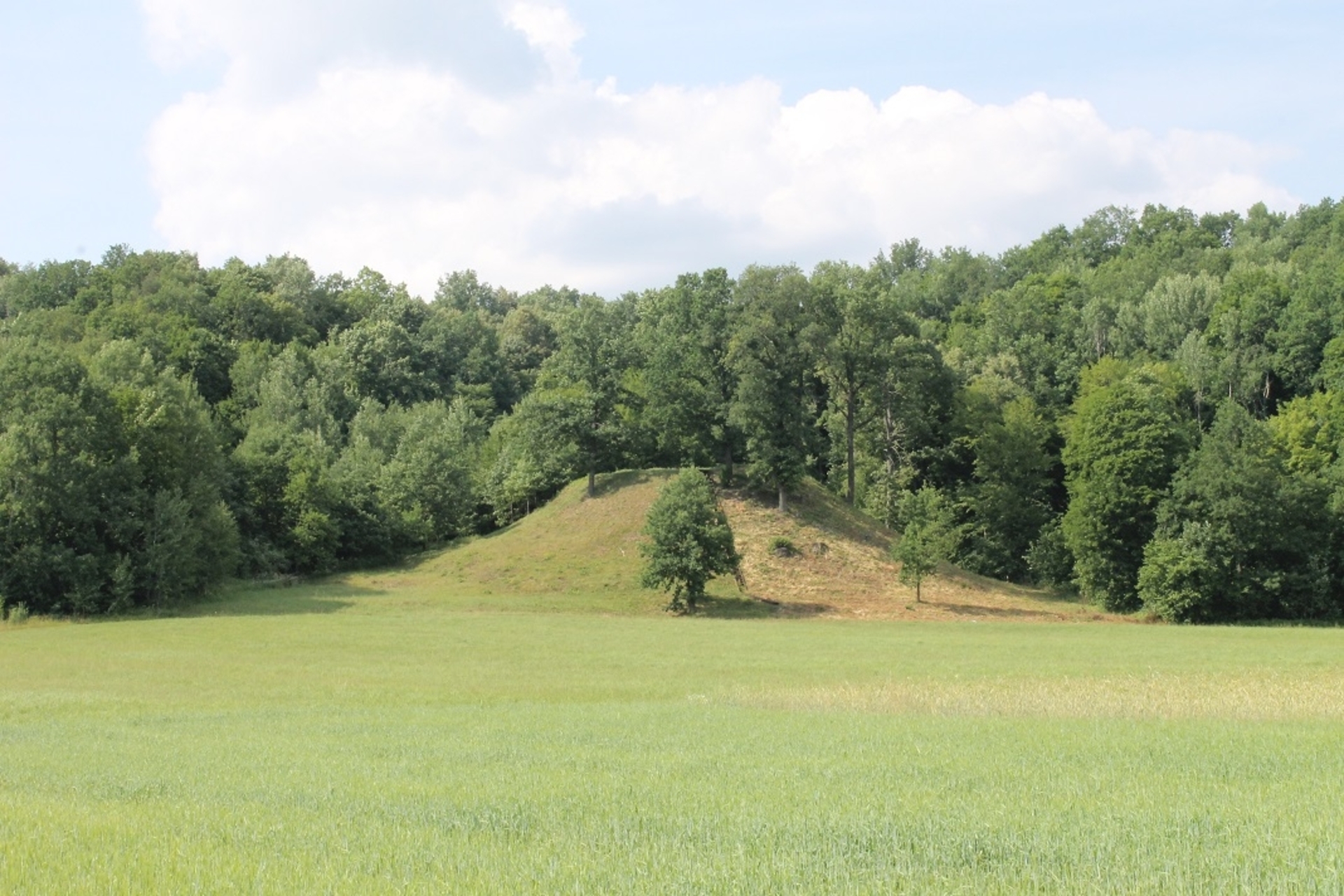Bačkininkėliai Hillfort

241

0

0
0 out of 5
(0 reviews)
The hillfort is situated on the left bank of the Nemunas River, on a separate hill rising at the edge of the valley. Its circular platform measures 17 meters in diameter, with a 1-meter-high and 6-meter-wide rampart on the northwestern edge. The slopes of the hillfort are steep, reaching 20 meters in height, and are covered with sparse deciduous trees, while the southwestern slope is grassy. To the east and southeast of the hill, there is a 3-hectare settlement, which was excavated in 1956–1957.
Info
-

Mounds
-
The hillfort is situated on the left bank of the Nemunas River, on a separate hill rising at the edge of the valley. Its circular platform measures 17 meters in diameter, with a 1-meter-high and 6-meter-wide rampart on the northwestern edge. The slopes of the hillfort are steep, reaching 20 meters in height, and are covered with sparse deciduous trees, while the southwestern slope is grassy. To the east and southeast of the hill, there is a 3-hectare settlement, which was excavated in 1956–1957.
During archaeological research, a cultural layer up to 1.2 meters thick, dating from the first millennium, was discovered in this settlement. Finds included hearths, utility pits, clay spindle whorls, an iron awl, a fragment of a clay crucible, combed, coarse,
polished, and smooth ceramics, as well as animal bones. Earlier discoveries also included wheel-thrown pottery shards with a wavy pattern.
In 1956–1957, archaeologist O. Kuncienė excavated almost the entire platform of the hillfort (covering an area of 209 square meters). A cultural layer, 1.2–1.25 meters thick, was uncovered, revealing two distinct horizons. In the lower horizon (up to 65 centimeters thick), an oval post-constructed building measuring 6x4 meters with a clay floor and open hearth was found, interpreted as a pagan temple. In the upper horizon (up to 60 centimeters thick), remains of hearths, stone pavements, a fragment of an iron awl, and examples of coarse pottery were discovered. This hillfort is dated to the first millennium.
Found a mistake?
Report

 Entertainment
Entertainment
 Food establishments
Food establishments





























 54.74317, 24.107865
54.74317, 24.107865
 Get directions
Get directions









